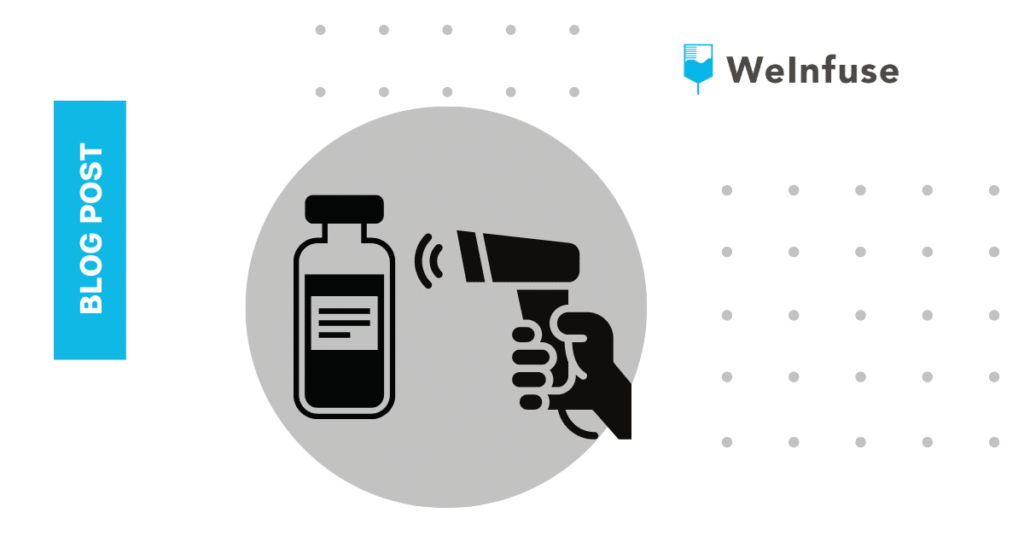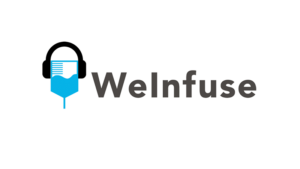Drug Supply Chain Security Act (DSCSA)
If you’ve been a WeInfuse client for a while, you might have seen our blog post on the Drug Quality and Security Act (DQSA). Passed in November 2013, Title II of the DQSA is the Drug Supply Chain Security Act (DSCSA), which outlines a plan to “build an electronic, interoperable system to identify and trace certain prescription drugs as they are distributed in the United States.”
Aimed at protecting patients from contaminated or counterfeit drugs, our previous post outlines what the DSCSA means for the manufacturers, distributors, and dispensers involved in the drug supply chain.
Most relevant to our clients is the 2017 requirement for manufactures to include identifiers on their packaging that are unique and traceable down to the unit level. These unique identifiers are included on the packaging for the medications that you receive at your infusion center, both in human-readable format and in the 2D Datamatrix codes and stacked barcodes on medication packaging.
As the 2023 deadline for package level product tracing and electronic, interoperable tracing systems, approaches, inventory management capabilities are becoming increasingly important at all points in the medication supply chain.
However, there have been some delays in the enforcement of DSCSA provisions. For instance, in September of 2019, the FDA delayed the “Wholesale Distributor Verification Requirement for Saleable Returned Drug Product—Compliance Policy,” requiring verification of identifiers on returned drugs before redistribution. In an announcement published in the Federal Register in October of this year, the FDA announced further delays of this policy for wholesale distributors along with the delay of the policy requiring dispensers to “verify the product identifier for suspect or illegitimate product in the dispenser’s possession or control beginning on November 27, 2020.”
The notice delays enforcement of these policies until November of 2023, citing not only difficulty in developing electronic systems that will improve interoperability, but also challenges in implementation, difficulties in finding a workflow for returned products, and perhaps most notably, the COVID-19 pandemic.
The notice sites that there has been a “reassignment of logistics and supply chain experts from DSCSA matters to COVID-19 pandemic response.” While this has delayed enforcement of certain DSCSA policies, if anything, this reassignment also shines a light on the importance of advancing supply chain efficiency and tracking capabilities to ensure increased efficacy of medication distribution and tracing along with patient safety.
You can read the FDA’s notice here.
While track and trace down to the patient administration level is not something that is currently written into the DSCSA, as the regulatory landscape evolves, we are quite certain that we will see reporting requirements for drug administration at the provider level. In preparation for such measures, WeInfuse has developed vial scanning and medication administration tracking at the patient level so that we are prepared for provider level requirements when they may come.
WeInfuse Vial Scanning
Our current vial scanning capabilities allow WeInfuse clients to scan Buy & Bill medications into your inventory counts in the app, automatically populating package quantities, lot numbers, and expiration dates from the information included in the 2D Datamatrix codes on medication packaging. Vial scanning has been one of our most popular features to date. Not only is vial scanning fun, but it is a huge time saver for inventory users during the check in process and eliminates human data entry errors by instantaneously and accurately populating lot numbers and expiration dates for received inventory.
While our vial scanning capabilities previously stopped here at the point of inventory check in, we are now picking up on vial scanning at the point of medication administration.
With our new barcode medication administration feature, WeInfuse clients will be given the option to enable a group level setting to enforce vial scanning on treatment notes. With this feature enabled, clinical users who click into the medication preparation section of a treatment note will be prompted to scan the 2D Datamatrix code for the primary medication on a patient’s order to confirm that they have selected and administered the exact vial that WeInfuse has prompted them to administer.
By scanning the item at the point of care, WeInfuse will be able to capture the unique, serialized vial information on a per patient treatment level and report this information throughout the system. The NDC, lot number, and expiration date on the scanned vial will need to match the information for vials that have been checked in and are listed as in stock for the WeInfuse group.
Even if the NDC, lot number, and expiration date on a scanned vial matches in stock inventory, if a nurse scans a 2D Datamatrix code that has a serial number that matches a vial of medication that has already been scanned into the system on another treatment note, the nurse will see an error notifying her that the vial of medication she scanned has already been assigned to a treatment note.
Once a scan is confirmed, medication will successfully be marked prepared and automatically deducted from inventory. Users will be able to hover over the line item to see the captured unique serial number of the item.
Not only is capturing serial uniqueness a great advancement for clients looking to track medication administration at the patient level and a step ahead of where infusion centers and provider offices need to be based on current DSCSA regulations, but these kind of tracking capabilities will all but eliminate inventory discrepancies and ease the burden of end of month inventory reconciliation. If a user accurately indicates the dose for a given patient treatment and scans the corresponding number of vials, you can be sure that the exact vials used for that patient’s treatment are tied to that WeInfuse treatment note and any subsequent reports that you pull. Inventory management is not easy, but WeInfuse certainly makes it much easier.
Further Steps
If you want to learn more about the Drug Supply Chain Security Act, (DSCSA), we believe the best resources are available through GS1, which you can find. GS1 also offers provider specific resources.
To learn more about how WeInfuse can help your teams create a fully tracked and patient reconciled inventory management system, contact our team and we will be happy to help. Click here to request a demo.




